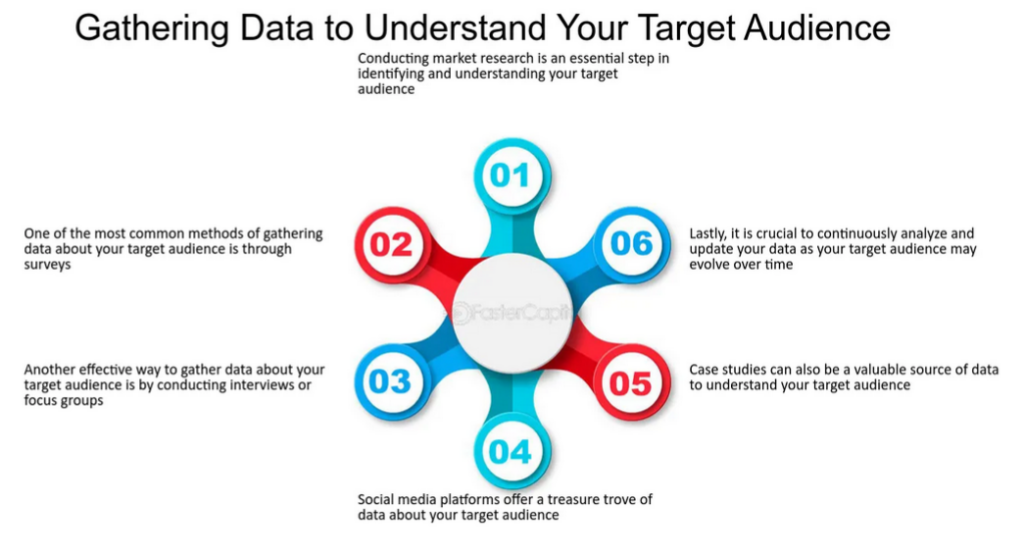- Home
- Solving Problems
- Target Audience Mistakes That ...

A staggering 80% of marketing campaigns fail, and the root cause often comes down to one thing: misaligned audience targeting. According to recent research, an overwhelming amount of content marketing is still aimed at the wrong target audience, missing the mark simply because the message isn’t landing where it should.
A report from the Association of National Advertisers (ANA)—whose members include giants like Coca-Cola, Walmart, and McDonald’s—highlights how this misalignment plays out in real time. Too often, brands chase lower advertising costs instead of actual audience value. The result? Ads ending up on low-quality sites full of fake news, conspiracy theories, and spam links. In fact, 15% of advertiser spending now goes to such placements, effectively throwing budget into a void.
In this article, we’ll take a closer look at the most common target audience mistakes across all marketing channels, including email marketing. We’ll also explore real-life examples where failing to understand the “target audience” meaning led to poor ad placements, disengaged readers, and wasted resources—and what you can do to avoid falling into the same trap.
Common Target Audience Mistakes Across All Marketing Channels
⚠️ Mistake 1: Assuming you know your audience without data
Many businesses make the mistake of believing they already understand their target audience based on intuition or past experience. Some businesses also make assumptions based on similar industry examples. All of these approaches are basically guesses, which makes them very risky in today’s data-driven environment. Without data-backed insights, you risk creating email content that just does not fit—does not fit your audience’s actual interests, needs, or behaviors. Here comes rule number one: knowing your target audience in marketing starts with analytics, not assumptions.

⚠️ Mistake 2: Overgeneralizing your audience
Trying to appeal to everyone usually results in appealing to no one. When you don’t focus on a specific target audience, your messages become vague and less persuasive as a result. Overgeneralization leads to low engagement rates and high unsubscribe numbers. Understanding the importance of target audience in marketing means going beyond basic demographics and building segments that reflect real people with their distinct goals, preferences, and pain points.
⚠️ Mistake 3: Ignoring behavioral and psychographic data
While demographics such as age or location provide you with valuable insights, they are only part of your digital marketing target audience. To make your data more comprehensive, you need to understand how your audience behaves and what motivates them. Psychographic data, such as lifestyle, interests, and values, adds crucial context that helps you create more personal messages. If you’re wondering why it’s important to know your target audience, this is exactly it: you’ll create better, smarter campaigns when you understand the why behind your audience’s choices.
⚠️ Mistake 4: Letting the product dictate the audience
Building a campaign around a product and then trying to find the right audience is a backward approach. Successful marketing always starts with the audience. Ask first: What is the target audience for this offer? Who really needs it? Then build your message accordingly. Letting the product take the lead often results in mismatched messaging and low engagement. Your target audience should always shape your product pitch—not the other way around.

Target Audience Mistakes in Email Marketing
⚠️ Mistake 5: Treating your entire list the same
Your email list consists of people—and people differ in their tastes, preferences, reasons for subscribing, demographics, and much more. So, treating your entire list as if everyone wants the same content, at the same time, in the same tone, is a fast way toward spiking unsubscribe rates. If you want your emails not just to land in the inbox but also to be opened and engaged with, you need to acknowledge the importance of target audience in marketing and create more individual experiences.
⚠️ Mistake 6: Segmenting incorrectly (or not enough)
Many marketers segment their lists into categories that don’t reflect the actual needs or stages of their target audience—or worse, they don’t segment at all. That’s a huge mistake. Proper segmentation allows you to focus on a specific target audience within your broader strategy. The way you communicate with long-time loyal customers should be completely different from how you approach first-time visitors. If you are serious about understanding what a target audience is in marketing, this is where it starts: with thoughtful, data-informed segmentation that reflects customers’ behavior and intent.

⚠️ Mistake 7: Misinterpreting engagement data
Contemporary email marketing offers a range of engagement indicators, but it’s important to read them correctly and in combination with one another. Sure, it’s great if 80% of your list is clicking on your offer, but if none of them converts or engages further, that’s more a reason for concern than celebration. Misreading audience signals can lead to bad personalization, poorly timed follow-ups, and broken automation. To understand your digital marketing target audience, you need to look for patterns instead of isolated actions.
⚠️ Mistake 8: Ignoring new or shifting audience preferences
Even if your audience is segmented and it works great for now, it’s not a static situation. People change, and so do their habits and pain points. An email strategy that worked great two years ago might completely fail today, and the reason could simply be that your audience changed. That’s why it’s crucial to remember that your target audience is always dynamic. Monitoring signals like changes in open rates, device usage, or even tone in replies can help you notice these shifts as they happen. This allows you to adapt steadily, rather than discovering it by looking at your metrics that have already collapsed and your audience has moved on.
Email Marketer’s Checklist for Audience Alignment
✅ Have I supported my assumptions with actual data or relied just on gut feeling?
✅ Do my emails reflect the recipient’s current stage, needs, and tone preferences?
✅ Am I segmenting my list beyond just buyer/non-buyer categories?
✅ Have I tailored this message to a specific target audience within my list?
✅ Does my email strategy account for shifting preferences or trends in my audience?
✅ Do I track engagement metrics in context or in isolation?
✅ Have I revisited my segmentation and messaging in the last 3–6 months?
✅ Do I understand the why behind my audience’s actions?
✅ Am I using behavioral triggers to personalize journeys?
✅ Do I have a plan in place to listen to audience feedback, directly or indirectly?
Why Is It Important to Know Your Target Audience: Real-World Examples of Misfires and Fixes
Pepsi’s Kendall Jenner ad campaign
❗ The problem:
In 2017, Pepsi released a commercial featuring Kendall Jenner that was addressed to millennials and was supposed “to project a global message of unity, peace, and understanding.”
Instead, the ad was immediately criticized for trivializing serious movements like Black Lives Matter and using activism for commercial gain. The core issue was in a complete misreading of their target audience’s values. Instead of resonating with younger, socially aware consumers, the ad was seen as performative and simplifying the Black Lives Matter movement as well as police brutality. Pepsi failed to grasp what the target audience is in marketing—not just who they are demographically, but what they care about emotionally and culturally.

🔄 The fix:
Pepsi pulled the ad and issued a public apology within 24 hours of release. While they didn’t relaunch a revised version, the incident sparked an internal review of their creative processes and underscored the need to consult more closely with audience insights before launching value-driven campaigns. This example illustrates why it is important to know your target audience, especially when addressing emotionally complex topics.
Tesco’s U.S. expansion
❗ The problem:
Tesco, a leading UK grocery chain, launched its “Fresh & Easy” stores in the U.S., aiming to replicate its British success. However, Tesco failed to account for significant differences in American shopping habits. U.S. consumers preferred larger, weekly shopping trips, whereas Tesco’s model was based on smaller, frequent visits. Additionally, the pre-packaged produce approach clashed with American preferences for selecting fresh items. This misalignment highlighted a lack of understanding of the digital marketing target audience in a new market.

🔄 The fix:
Despite efforts to adjust, Tesco couldn’t overcome the initial missteps and eventually exited the U.S. market. This case underscores the importance of target audience in marketing, especially when entering new territories. Comprehensive market research and a deep understanding of local consumer behaviors are crucial to avoid such costly errors.
To Sum Up: Know Who You’re Talking To, or Risk Saying Nothing at All
Despite countless real-world failures, even from global giants, many companies still underestimate the importance of knowing their target audience before launching a campaign or product. Or worse, like Tesco, they skip the research altogether and hope for the best.
But if this article shows us anything, it’s that while mistakes are inevitable, most are also absolutely avoidable. If you define your target audience based on data, segment them properly, and continuously adapt your strategy to reflect changing behaviors and preferences, then there’s no magic behind your success. In the end, it always comes down to this: research, apply, adjust—repeat. And your audience will see the difference.



